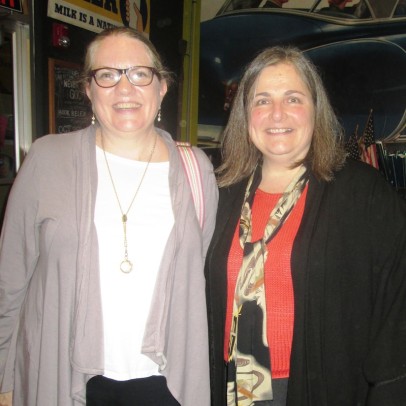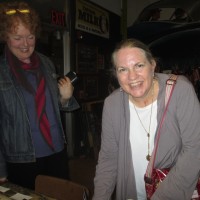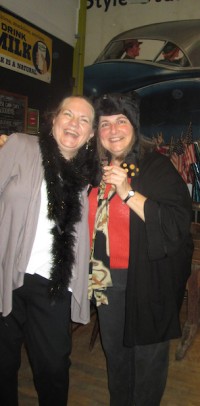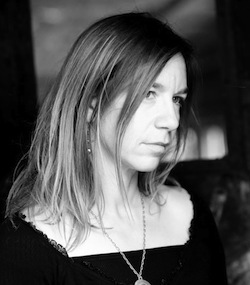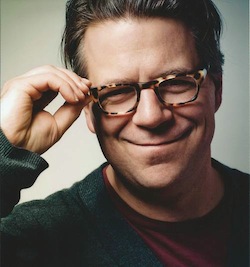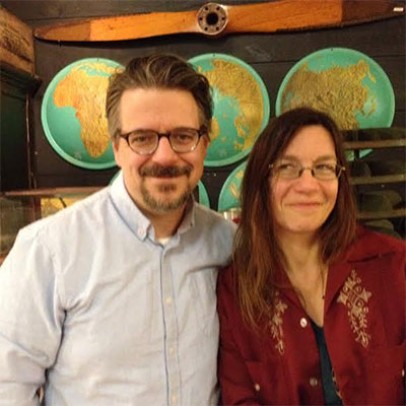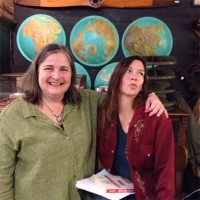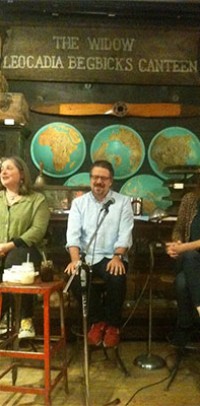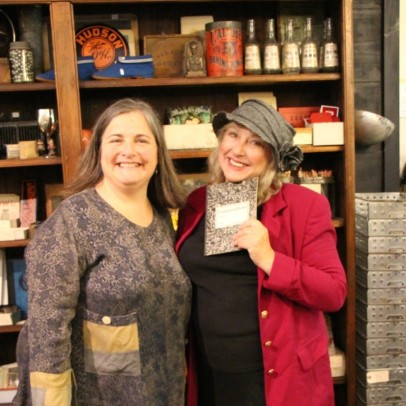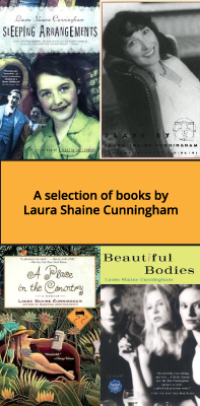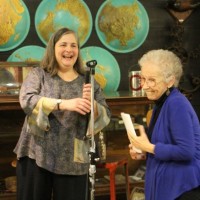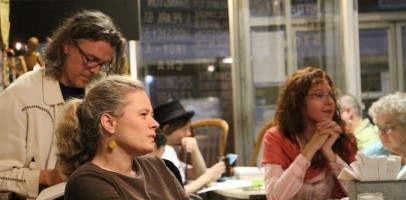CAROL GOODMAN‘s fiction includes her bestselling and critically acclaimed debut novel The Lake of Dead Languages, The Seduction of Water, The Drowning Tree, The Ghost Orchid, The Sonnet Lover, Arcadia Falls, the young adult novel Blythewood, and a fantasy trilogy written under the name Juliet Dark. Goodman’s books have been nominated for the IMPAC award twice, the Simon & Schuster/Mary Higgins Clark award, and the Nero Wolfe Award; The Seduction of Water won the Hammett Prize in 2003. She lives in Dutchess County, and teaches creative writing and literature at SUNY New Paltz.
Read Nina Shengold’s Chronogram profile.
“Once Upon a Time” 10/30/14 – The Exercises
Carol Goodman and Nina Shengold
The Selkie by Yaamas
Selkie by Arthur Rackham
Carol signing for a reader
Carol Goodman and Nina Shengold
Carol Goodman enchanted us with a reading from her Hammett Prize winning mystery The Seduction of Water, in which a woman recalls her mother telling her a bedtime story about a selkie, a seal-woman captured by a farmer who steals her skin.
Our topic was “Once Upon a Time,” and we talked about the timeless allure of fairy tales, which Carol uses often in her novels and in her classroom at SUNY New Paltz. “They are our first stories,” she explained, going on to discuss the hero’s-journey structure and character archetypes in these classic tales. They’re laden with meaning and metaphor, and when one of her students has trouble coming up with a story idea, she often suggests retelling a fairy tale from a different point of view.
Carol also advises writing students “to go straight for the conflict;” Nina used to give teenage playwrights the cooking-show advice, “Bam! Kick it up a notch!”
Fairytales can provide a useful metaphor and prototype for a character’s journey, even if the book is not set in a magical realm (we talked about Jane Eyre as a character who goes through her own dark wood). Carol observed that an essential question for any character is “Why are you telling me this now?”
She writes longhand in notebooks, spending one day each week typing the previous week’s work. Since she writes in sequence, Carol sometimes finds that she needs to insert exposition in later drafts to set up choices she made as the story evolved. She cited a movie term for this–“ret-con” (for “retroactive continuity)–and suggested introducing the exposition into the story twice: once in passing near the opening, and again about 60 pages later, so that when it reappears in mid-book it will seem familiar and organic to the story. Nina pointed out that classic comedy also observes a “rule of three.”
CAROL’S EXERCISE:
(Also from The Seduction of Water; the narrator is a writing teacher!)
“Write about your favorite fairy tale from your childhood. Retell the story, but also say who told you the story and what you thought about it then. What did you learn from the story? What did it tell you about the world you lived in?”
NINA’S EXERCISE:
Choose something in this room that could be a magical object, transforming you or your character in some unexpected way or transporting you into another world.
